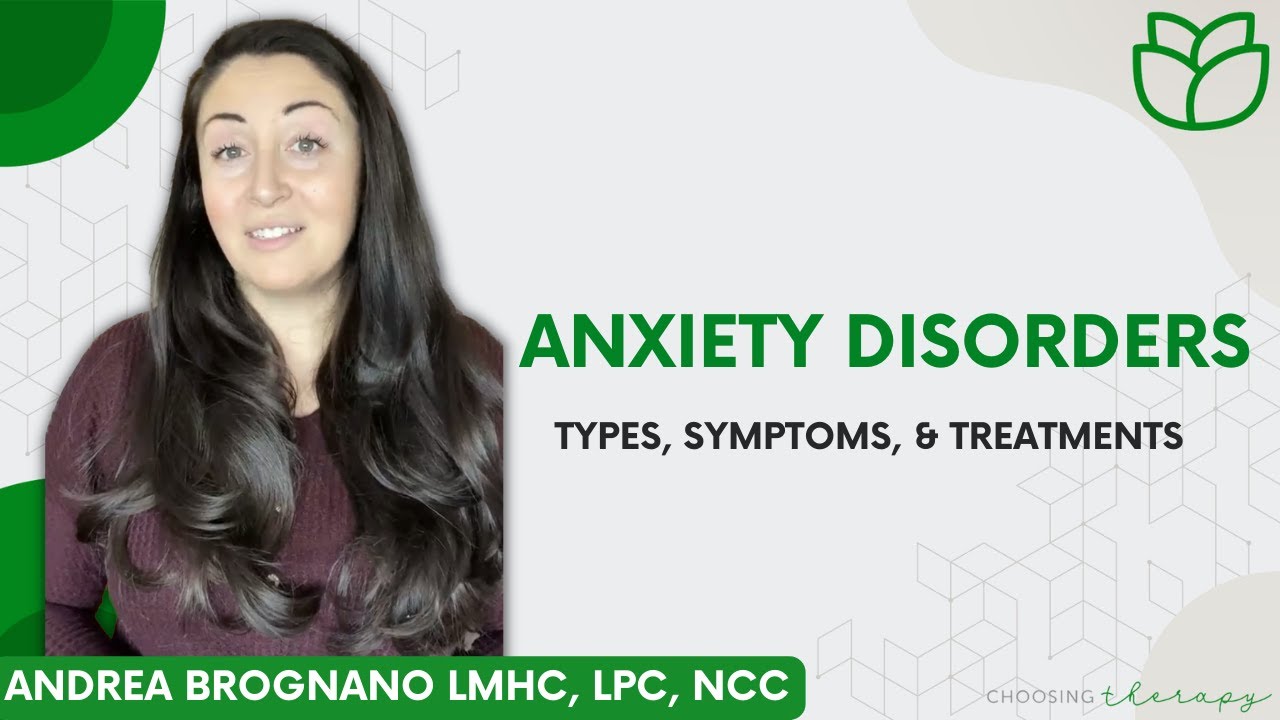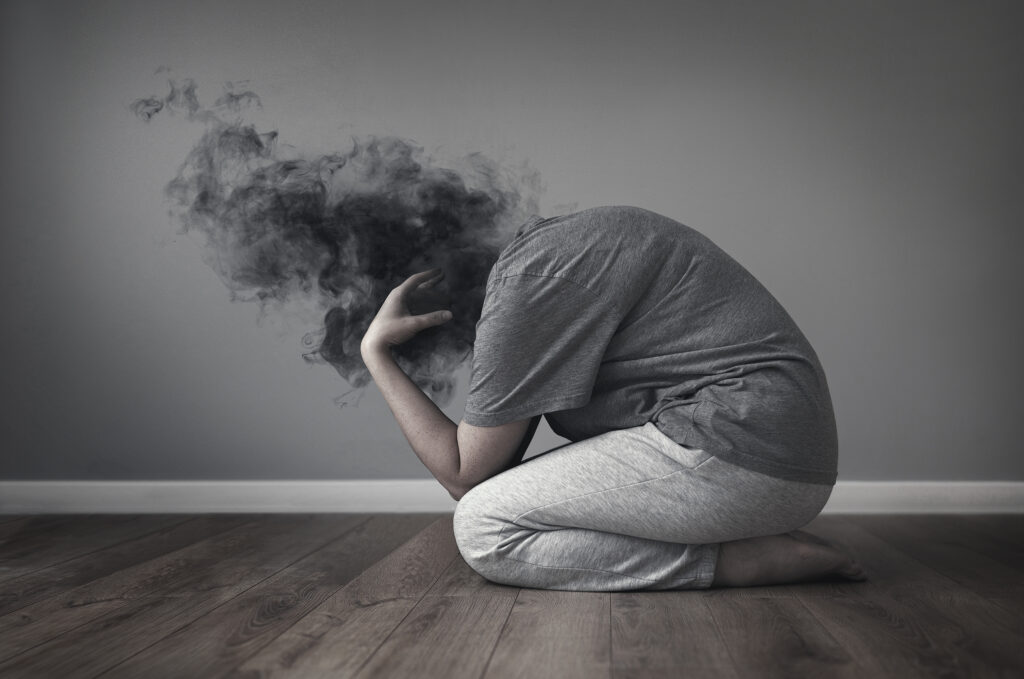The Types of Anxiety Disorders: Symptoms, Diagnosis, and Treatment

Types of Anxiety Disorders:
Generalized Anxiety Disorder (GAD): Understanding the Widespread Worries
Generalized Anxiety Disorder, or GAD, is a common anxiety disorder characterized by excessive and persistent worry about various aspects of life. Individuals with GAD often find it challenging to control their worries, which can interfere with daily activities and lead to significant distress. This disorder affects approximately 6.8 million adults in the United States alone.
People with GAD commonly experience symptoms such as restlessness, irritability, muscle tension, sleep disturbances, and difficulties in concentration. Their worries tend to be excessive and disproportionate to the actual threat, leading to a constant state of anxiety. Although the exact causes of GAD are still being explored, research suggests a combination of genetic, environmental, and neurological factors contribute to the development of this disorder.
It is important to note that GAD is a chronic condition that can last for years, making it crucial to seek appropriate treatment. Cognitive-behavioral therapy (CBT) and medication management are common treatment approaches for GAD. These interventions aim to help individuals learn effective coping strategies, challenge and reframe irrational thoughts, and manage their anxiety symptoms. With the right support and treatment, individuals with GAD can learn to manage their worries and lead fulfilling lives.
1. Generalized Anxiety Disorder (GAD): Understanding the Widespread Worries

Generalized Anxiety Disorder (GAD) is a common psychological condition that affects millions of individuals worldwide. This disorder is characterized by excessive and persistent worrying about various aspects of life, including work, relationships, health, and finances. Unlike normal everyday worries, the anxiety experienced by those with GAD is often disproportionate and difficult to control.
People with GAD often find themselves feeling restless, on edge, and constantly anticipating something bad to happen. The worries they experience may be accompanied by physical symptoms such as muscle tension, headaches, fatigue, and difficulty sleeping. These symptoms can significantly interfere with daily functioning and overall quality of life.
It is important to note that GAD is not simply a result of stress or temporary anxious feelings. The disorder is chronic and can last for months or even years if left untreated. Therefore, seeking professional help is crucial in managing GAD effectively. With the proper diagnosis and treatment, individuals with GAD can learn effective coping strategies and techniques to better manage their worries and regain control over their lives.
2. Panic Disorder: Unraveling the Intense and Unexpected Panic Attacks

Panic disorder can be a debilitating condition that greatly impacts a person’s daily life. It is characterized by intense and unexpected panic attacks, which can strike without warning. These attacks are typically accompanied by physical symptoms such as heart palpitations, shortness of breath, chest pain, and a sense of impending doom.
The experience of a panic attack can be terrifying, making individuals feel as though they are losing control or even having a heart attack. It is important to note that panic attacks are not dangerous and do not cause any long-term physical harm. However, the fear of experiencing another attack can lead to significant distress and avoidance behaviors, which can further exacerbate the disorder.
Research has shown that panic disorder affects approximately 2-3% of the population. It is more common in women than in men, with the average age of onset occurring in young adulthood. The exact cause of panic disorder is unknown, although it is believed to involve a combination of genetic, biological, and environmental factors. Treatment options for panic disorder include medication, such as selective serotonin reuptake inhibitors (SSRIs), and cognitive-behavioral therapy (CBT), which helps individuals learn to manage and reduce anxiety symptoms.
Overall, gaining a better understanding of panic disorder and its associated panic attacks can help individuals recognize symptoms, seek appropriate treatment, and ultimately regain control over their lives. By addressing this condition with empathy and evidence-based approaches, we can help those suffering from panic disorder find the support they need to live a fulfilling life.
3. Social Anxiety Disorder (SAD): Navigating Fear in Social Situations
Social Anxiety Disorder (SAD) is a common mental health condition that affects millions of individuals worldwide. People with SAD often experience intense fear and anxiety in social situations, making it difficult for them to interact with others and participate in everyday activities.
The fear of being judged, criticized, or embarrassed can be overwhelming for individuals with SAD, leading them to avoid social gatherings, public speaking, or even simple conversations. These individuals may constantly worry about being humiliated or making mistakes in front of others, which can significantly impact their personal and professional lives.
It is important to understand that SAD is not simply shyness or nervousness; it is a diagnosed anxiety disorder that needs to be treated and managed effectively. Without proper intervention, social anxiety can persist and worsen over time, potentially leading to isolation, low self-esteem, and even depression. However, with the right support and treatment, individuals with SAD can learn to navigate social situations and regain control over their lives.
Certainly! Here’s a table summarizing the strategies for navigating fear in social situations, specifically in the context of Social Anxiety Disorder (SAD):
| Navigating Fear in Social Situations (SAD) | Description |
|---|---|
| Understanding Social Anxiety Disorder (SAD) | Intense Fear: Recognizing the intense fear of judgment or embarrassment in social situations. |
| Persistent Avoidance: Acknowledging the tendency to avoid social events to prevent anxiety. | |
| Challenging Negative Thoughts | Identifying Irrational Beliefs: Recognizing and challenging irrational thoughts contributing to social anxiety. |
| Reality Testing: Evaluating the likelihood of feared outcomes and challenging exaggerated negative predictions. | |
| Gradual Exposure to Social Situations | Hierarchy of Exposure: Creating a hierarchy of social situations from least to most anxiety-provoking. |
| Systematic Approach: Gradually facing and navigating social situations in a controlled and systematic manner. | |
| Developing Coping Strategies | Relaxation Techniques: Learning and practicing relaxation methods to manage anxiety in social settings. |
| Cognitive Restructuring: Changing negative thought patterns to promote more positive and realistic thinking. | |
| Building Social Skills | Role-Playing: Practicing social interactions through role-playing to enhance social skills. |
| Communication Training: Learning effective communication techniques to ease interactions. | |
| Seeking Professional Support | Therapy and Counseling: Engaging in therapy, such as cognitive-behavioral therapy (CBT), to address social anxiety. |
| Medication: Considering medication under the guidance of a healthcare professional for symptom management. |
4. Specific Phobias: Conquering Irrational Fears
Specific phobias are a common type of anxiety disorder that involve an intense and irrational fear of a specific object, situation, or activity. These fears can be debilitating and have a significant impact on a person’s daily life. However, it’s important to note that specific phobias are highly treatable, and individuals can overcome their fears with the right support and treatment.
One of the most effective treatments for specific phobias is exposure therapy. This therapy involves gradually exposing individuals to their feared object or situation in a safe and controlled environment. Through repeated exposure, individuals can learn to confront and manage their fears, eventually diminishing their anxiety response.
In addition to exposure therapy, cognitive-behavioral therapy (CBT) is also commonly used to treat specific phobias. This form of therapy helps individuals identify and challenge their negative thoughts and beliefs surrounding their phobia. By replacing these irrational thoughts with more realistic and positive ones, individuals can change their behavior and response to their phobia.
It’s important to remember that seeking help for specific phobias is not a sign of weakness, but rather a courageous step towards regaining control and improving quality of life. With the right treatment and support, individuals can conquer their irrational fears and live a life free from the constraints of specific phobias.
5. Obsessive-Compulsive Disorder (OCD): Exploring Intrusive Thoughts and Compulsive Behaviors
Obsessive-Compulsive Disorder (OCD) is a mental health condition that is characterized by the presence of intrusive and distressing thoughts, as well as repetitive behaviors or rituals aimed at reducing anxiety. It affects approximately 2-3% of the population, making it one of the most common psychiatric disorders worldwide. Although OCD can manifest in various ways, the underlying theme revolves around a cycle of obsessions and compulsions that can significantly interfere with daily life.
Individuals with OCD often experience intrusive thoughts or images that are distressing and difficult to control. These obsessions can range from fears of contamination and cleanliness to doubts about safety and order. In response to these obsessions, individuals may engage in compulsive behaviors or rituals, such as excessive hand washing, checking, or arranging objects in a specific order. These rituals are performed to alleviate anxiety and provide temporary relief, but they often become time-consuming and interfere with normal functioning.
It is important to note that while many people may have occasional intrusive thoughts or engage in repetitive behaviors, individuals with OCD experience these symptoms at a more intense and debilitating level. OCD can severely impact relationships, work, and overall quality of life. However, with appropriate treatment and support, individuals with OCD can learn to manage their symptoms and regain control over their lives.
6. Post-Traumatic Stress Disorder (PTSD): Unveiling the Aftermath of Traumatic Events
Post-Traumatic Stress Disorder (PTSD) is a psychiatric disorder that can develop after experiencing or witnessing a traumatic event. The aftermath of such events can have lasting effects on an individual’s mental health, leading to symptoms that interfere with daily functioning. While it is normal to feel distressed or overwhelmed after a traumatic event, individuals with PTSD experience intense and persistent symptoms that can significantly impact their quality of life.
One of the hallmark symptoms of PTSD is intrusive thoughts or memories related to the traumatic event. These can manifest as distressing nightmares, flashbacks, or intrusive and distressing thoughts. Individuals may also actively avoid anything that reminds them of the trauma, including people, places, or activities. This avoidance can further reinforce feelings of isolation and detachment from others. Additionally, individuals with PTSD may experience negative changes in their mood and cognition, such as a persistent negative outlook, distorted blame or guilt, and difficulties with memory and concentration.
It is important to note that PTSD is a complex disorder that can vary widely from person to person. While some individuals may develop symptoms immediately after the traumatic event, others may not experience them until weeks, months, or even years later. Furthermore, the severity and duration of symptoms can vary, with some individuals experiencing significant impairment in their daily functioning, while others may have milder symptoms that come and go.
If you or someone you know is struggling with the aftermath of a traumatic event and experiencing symptoms of PTSD, it is crucial to seek professional help. Treatment options such as therapy, medication, or a combination of both can significantly alleviate symptoms and help individuals regain control over their lives. With appropriate support and intervention, individuals with PTSD can gradually heal and find ways to effectively manage their symptoms.
7. Separation Anxiety Disorder: Examining Excessive Anxiety in Separation Situations
Separation Anxiety Disorder is a condition that can greatly impact the lives of those who experience it, as well as their loved ones. This disorder is characterized by excessive anxiety and distress when separated from attachment figures, such as parents or caregivers. While it is normal for young children to experience some level of anxiety when separated from their primary caregivers, individuals with Separation Anxiety Disorder experience levels of distress that are far beyond what is considered developmentally appropriate.
The symptoms of Separation Anxiety Disorder can manifest in a variety of ways. Children may display clingy behavior, refuse to go to school or other activities, and experience nightmares or physical symptoms, such as stomachaches or headaches, when faced with separation. In adults, this disorder can lead to difficulty leaving home, avoiding situations that may result in separation, and overwhelming feelings of fear and distress. It is important to note that Separation Anxiety Disorder is not just limited to childhood; it can also present in adults and may have a significant impact on daily functioning and overall well-being.
Understanding and raising awareness about Separation Anxiety Disorder is crucial in order to provide appropriate support and treatment for individuals affected by this condition. While it can be difficult to witness a loved one struggling with excessive anxiety in separation situations, it is important to approach the situation with understanding and empathy. Early intervention and evidence-based treatments, such as therapy and medication, can greatly improve the quality of life for individuals with Separation Anxiety Disorder. By providing a compassionate and supportive environment, we can help those affected by this disorder to navigate their anxiety and lead fulfilling lives.
8. Agoraphobia: Understanding the Fear of Open Spaces and Public Places
Agoraphobia is a debilitating anxiety disorder characterized by an intense fear of open spaces and public places. People with agoraphobia often experience overwhelming anxiety and panic attacks when they find themselves in situations where they feel trapped or unable to escape. This fear can be so severe that individuals may avoid leaving their homes altogether, leading to a significant negative impact on their daily lives and overall well-being.
The underlying cause of agoraphobia is not entirely understood, but it is believed to be a combination of genetic, environmental, and psychological factors. Research suggests that individuals who have a history of panic disorder or other anxiety disorders are more susceptible to developing agoraphobia. Traumatic life events, such as accidents or abuse, can also contribute to the development of this disorder.
Agoraphobia affects approximately 1.7% of the global population, with women being twice as likely to be diagnosed than men. The onset of agoraphobia usually occurs during late adolescence or early adulthood, but it can develop at any age. The symptoms of agoraphobia can vary in severity, but they often include intense fear, rapid heartbeat, shortness of breath, trembling, dizziness, and a strong desire to escape the situation.
Early intervention and treatment are crucial in managing agoraphobia. Cognitive-behavioral therapy (CBT) is the most effective treatment approach, focusing on gradually exposing individuals to feared situations while teaching them coping mechanisms to manage their anxiety. Medication, such as selective serotonin reuptake inhibitors (SSRIs), may also be prescribed to alleviate symptoms.
In conclusion, agoraphobia is a distressing anxiety disorder that hinders individuals from comfortably navigating open spaces and public places. With the right support and treatment, individuals can learn to overcome their fears and regain control of their lives.
9. Selective Mutism: Delving into the Inability to Speak in Specific Settings
Selective mutism is a unique anxiety disorder that manifests as an inability to speak in certain social settings. Although this condition primarily affects children, it can also persist into adolescence and adulthood. Individuals with selective mutism often experience intense fear, anxiety, and discomfort in situations where they feel pressured to speak, such as at school, social gatherings, or public events.
The underlying causes of selective mutism are complex and multifaceted. Research suggests that genetic factors, temperament, and environmental influences may contribute to the development of this disorder. Additionally, individuals with selective mutism may have an overactive amygdala, the area of the brain responsible for processing fear and anxiety. This heightened response to perceived threats can trigger a freeze response, leading to the inability to speak.
People with selective mutism may exhibit a range of symptoms besides the inability to speak. These can include excessive shyness, social withdrawal, avoidance of eye contact, and physical symptoms such as stomachaches or headaches. It is important to understand that selective mutism is not a deliberate refusal to speak, but rather a result of overwhelming anxiety and fear. Proper diagnosis and treatment, such as cognitive-behavioral therapy and medication, can help individuals with selective mutism overcome their challenges and improve their quality of life.
10. Substance-Induced Anxiety Disorder: Analyzing Anxiety Triggered by Substance Abuse
Substance-induced anxiety disorder is a specific type of anxiety disorder that is triggered by substance abuse. This disorder can occur when an individual uses or withdraws from certain substances, such as drugs or alcohol, and experiences intense feelings of anxiety as a result. It is important to understand the factors that contribute to this condition, as well as the potential consequences for those who are affected.
One of the key factors in substance-induced anxiety disorder is the chemical impact that substances have on the brain. These substances can disrupt the balance of neurotransmitters, which are responsible for regulating our emotions and mood. As a result, individuals may experience heightened levels of anxiety when under the influence or during withdrawal. Additionally, certain substances, such as stimulants like cocaine or amphetamines, can directly induce feelings of anxiety even in small doses.
The consequences of substance-induced anxiety disorder can be severe and wide-ranging. Individuals may find it difficult to maintain relationships, perform at work or school, or engage in daily activities due to their heightened anxiety levels. Moreover, substance abuse itself can exacerbate anxiety symptoms and create a destructive cycle that is challenging to break free from. Seeking professional help and undergoing treatment for both substance abuse and anxiety disorder is crucial in managing and overcoming this condition.
11. Adjustment Disorder with Anxiety: Coping with Stressful Life Changes
Coping with stressful life changes can be a challenging task, especially when it comes to managing the anxiety that often accompanies these transitions. Adjustment Disorder with Anxiety is a mental health condition that occurs when individuals struggle to adapt to significant life events, such as a change in employment, relationship, or environment.
It is important to note that Adjustment Disorder with Anxiety typically develops within three months of the stressful event and can manifest in various ways, including excessive worry, irritability, sleep disturbances, and difficulty concentrating. While it is normal to experience some level of anxiety during times of change, Adjustment Disorder with Anxiety involves persistent and disproportionate symptoms that significantly impact daily functioning. Understanding this condition is crucial in order to seek appropriate support and develop effective coping strategies.
As with any mental health disorder, seeking professional help is essential for a proper diagnosis and treatment plan. Therapy, such as cognitive-behavioral therapy (CBT), can be highly beneficial in helping individuals identify and change negative thought patterns and behaviors associated with the anxiety. Additionally, medication may be prescribed to alleviate the symptoms and provide temporary relief. It is important to remember that everyone copes with life changes differently, and what works for one person may not necessarily work for another. Finding the right approach to managing Adjustment Disorder with Anxiety may require some trial and error, but with time and support, it is possible to find effective methods for coping and moving forward.
12. Anxiety Disorder Due to a Medical Condition: Identifying Anxiety Linked to Physical Health Issues
Anxiety can manifest in various forms, and one such form is anxiety disorder due to a medical condition. It is not uncommon for individuals with physical health issues to also experience anxiety. In fact, research suggests that around 20% of individuals with chronic medical conditions also have co-occurring anxiety disorders (source). This highlights the significance of recognizing and addressing the link between physical health and anxiety.
Identifying anxiety that stems from a medical condition can be complex, as symptoms may overlap with those of the underlying illness. However, understanding the connection between the two is crucial in order to provide appropriate support and intervention. Medical conditions such as cardiovascular diseases, respiratory disorders, and chronic pain have been associated with heightened anxiety levels (source). Additionally, certain medications used to manage physical health conditions may also contribute to anxiety symptoms as a side effect (source). Therefore, it is essential for healthcare professionals to consider both physical and mental well-being when diagnosing and treating patients.
13. Childhood and Adolescent Anxiety Disorders: Recognizing Anxiety in Younger Individuals
Childhood and adolescence can be challenging stages of life, marked by numerous changes and uncertainties. It is during this time that individuals may experience anxiety disorders, which can have a significant impact on their overall well-being. Recognizing and understanding anxiety in younger individuals is crucial in order to provide appropriate support and interventions.
Anxiety disorders in children and adolescents are more common than many people realize. In fact, research suggests that about 1 in 8 children and adolescents experience an anxiety disorder at some point during their development. These disorders can manifest in various ways, such as excessive worrying, fearfulness, avoidance of certain situations, sleep disturbances, and physical symptoms like stomachaches or headaches.
The key to recognizing anxiety in younger individuals lies in understanding the typical developmental milestones and behaviors for their age. While it is normal for children and teenagers to experience occasional worries or fears, anxiety disorders involve persistent and excessive levels of anxiety that interfere with daily life. It is important to look for patterns of behavior that are significantly different from what is considered typical or age-appropriate. For example, if a child consistently avoids school or social activities due to intense fear or worry, it may be a sign of an anxiety disorder. By being attentive and observant, parents, teachers, and healthcare providers can play a crucial role in identifying and addressing anxiety disorders in children and adolescents.
14. Co-Occurring Anxiety Disorders
Co-occurring anxiety disorders present a complex challenge for individuals seeking relief from their symptoms. When two or more anxiety disorders are present simultaneously, the impact on daily life can be compounded, making it crucial to understand and address these conditions comprehensively.
Research has shown that the occurrence of co-occurring anxiety disorders is relatively common. According to studies, approximately half of individuals diagnosed with one anxiety disorder will also meet the criteria for another anxiety disorder at some point in their lives (Kessler et al., 2008). This high prevalence suggests that it is essential to consider the possibility of multiple anxiety disorders when formulating an accurate diagnosis and developing a suitable treatment plan.
Moreover, the presence of co-occurring anxiety disorders can intensify symptoms and increase the risk of developing other mental health conditions. For instance, individuals with co-occurring anxiety disorders are more likely to experience depression, substance abuse, and suicidal ideation (Grant et al., 2005). Therefore, it is crucial to address these intertwined conditions comprehensively to promote overall well-being and prevent further complications.
While navigating the complexities of co-occurring anxiety disorders can be challenging, understanding the underlying factors and seeking appropriate treatment can provide individuals with hope and relief. By recognizing the interconnected nature of these disorders, healthcare professionals can tailor interventions that address multiple anxiety disorders simultaneously, leading to improved outcomes and a brighter future for those in distress.
What is the difference between co-occurring anxiety disorders and other types of anxiety disorders?
Co-occurring anxiety disorders refer to the presence of multiple anxiety disorders in an individual, while other types of anxiety disorders focus on specific anxiety disorders individually.
How common are co-occurring anxiety disorders?
Co-occurring anxiety disorders are relatively common, with many individuals experiencing more than one anxiety disorder simultaneously.
Can co-occurring anxiety disorders worsen symptoms?
Yes, having multiple anxiety disorders can often exacerbate symptoms and make it more challenging to manage anxiety effectively.
Is it possible to have co-occurring anxiety disorders and other mental health conditions?
Yes, it is possible for an individual to have co-occurring anxiety disorders along with other mental health conditions, such as depression or bipolar disorder.
Are the treatment approaches for co-occurring anxiety disorders different?
The treatment approaches for co-occurring anxiety disorders may involve elements from the individual treatment plans of each anxiety disorder, tailored to the specific needs of the individual.
Can co-occurring anxiety disorders be cured?
While co-occurring anxiety disorders cannot be completely cured, they can be effectively managed through a combination of therapy, medication, and lifestyle changes.
Are there support groups available for individuals with co-occurring anxiety disorders?
Yes, there are support groups and online communities specifically designed for individuals with co-occurring anxiety disorders, providing a platform for sharing experiences and finding support.
Can stress management techniques help with co-occurring anxiety disorders?
Yes, stress management techniques such as mindfulness, relaxation exercises, and self-care practices can be beneficial for individuals with co-occurring anxiety disorders in managing their symptoms.
Is it possible to lead a normal life with co-occurring anxiety disorders?
With appropriate treatment and support, individuals with co-occurring anxiety disorders can lead fulfilling and productive lives, although managing symptoms may require ongoing effort.
Can co-occurring anxiety disorders be diagnosed in children?
Yes, co-occurring anxiety disorders can be diagnosed in children, although the symptoms and treatment approaches may differ from those in adults.
Can co-occurring anxiety disorders be hereditary?
There may be a genetic component to the development of co-occurring anxiety disorders, but environmental factors and individual experiences also play a significant role.
How long does it take to see improvement in symptoms of co-occurring anxiety disorders?
The time it takes to see improvement in symptoms of co-occurring anxiety disorders varies from individual to individual, but with consistent treatment and support, positive changes can occur over time.
Can lifestyle changes, such as regular exercise and a healthy diet, help manage co-occurring anxiety disorders?
Yes, incorporating lifestyle changes such as regular exercise, a balanced diet, and sufficient sleep can contribute to overall well-being and help manage symptoms of co-occurring anxiety disorders.
Is it possible to develop new anxiety disorders while already having co-occurring anxiety disorders?
Yes, individuals with co-occurring anxiety disorders can develop new anxiety disorders over time, as anxiety can manifest in different ways and under various circumstances.






